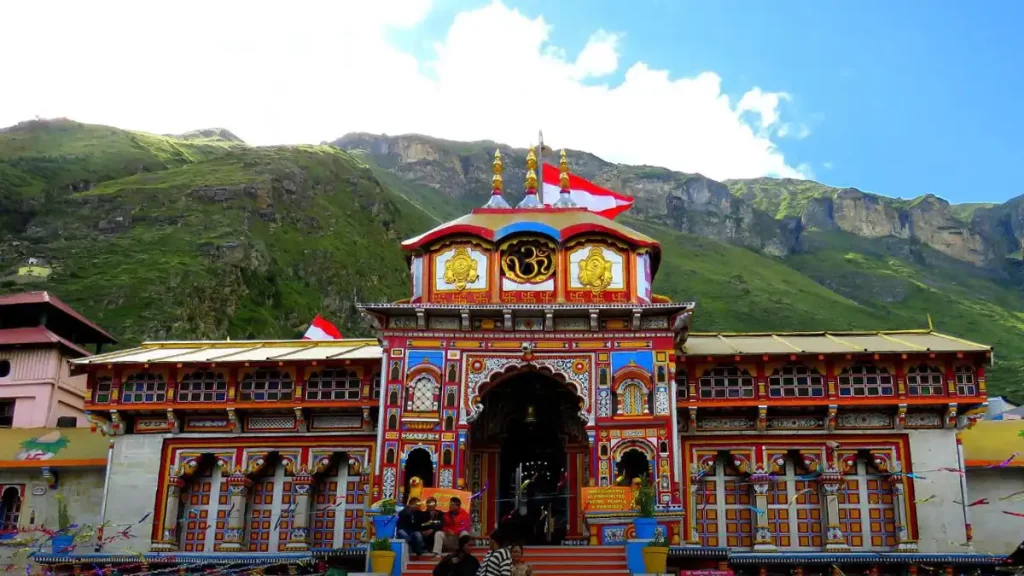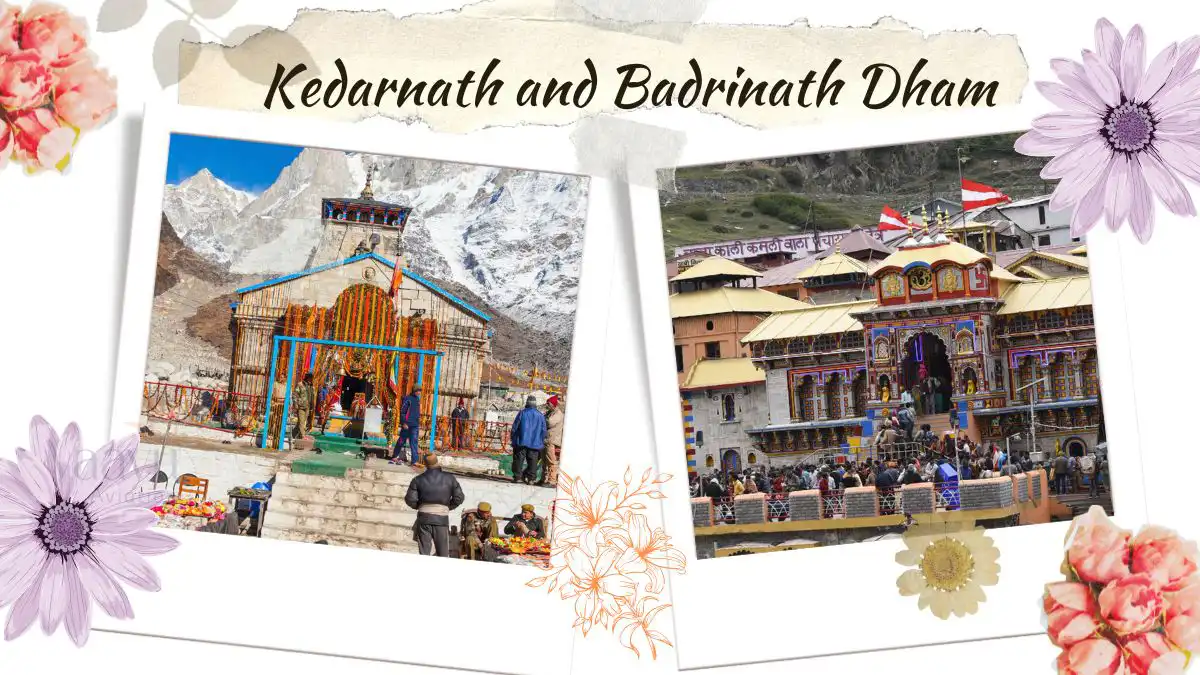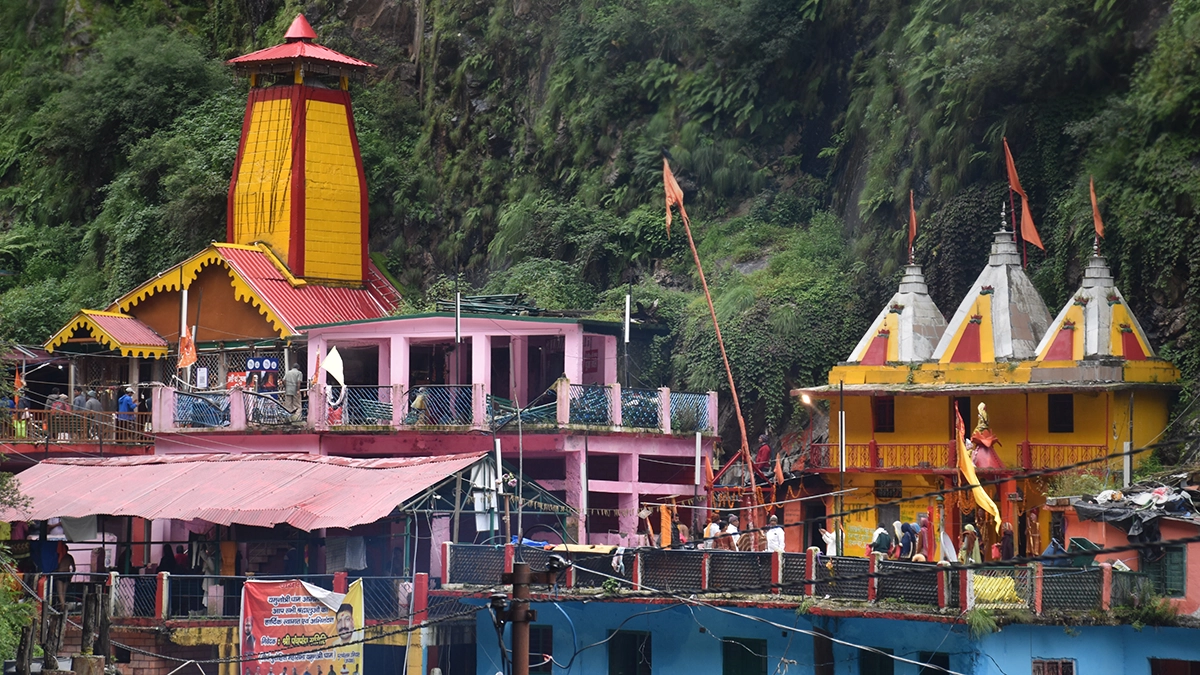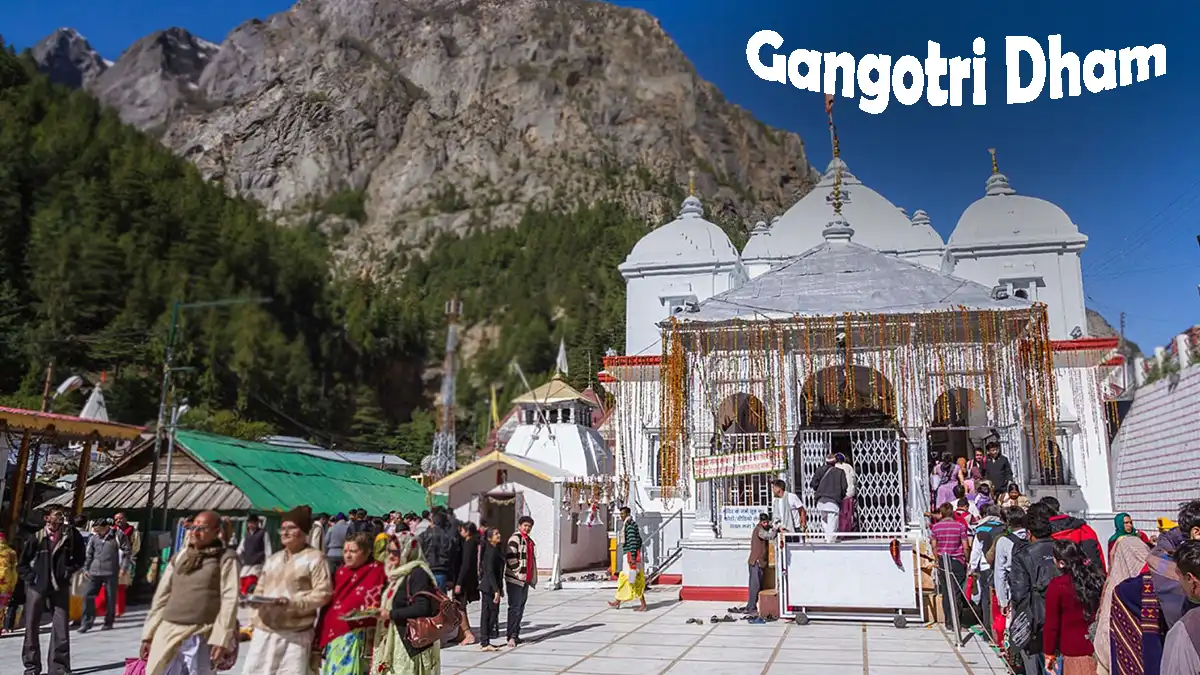Badrinath Dham is one of the most famous pilgrimage sites in India and is situated in the Garhwal Himalayan region of Uttarakhand state. This holy town is the abode of the Badrinath Temple of Lord Vishnu and is one of the Char Dham as well as Chota Char Dham (also known as Char Dham of Uttarakhand). It is not just a pilgrimage to Badrinath but also a chance to experience the divine natural beauty as well as the rich cultural history of the region. This blog explores various aspects of Badrinath Dham. So let’s check.
Badrinath Dham Overview
Badrinath Dham is in Chamoli District of Uttarakhand and is at an altitude of about 3,300 meters (10,826 feet) above sea level. Established in the Garhwal region on the banks of the Alaknanda River, the town is bordered from all sides by snow-clad mountains, lush green valleys and dense forests. The main attraction here is the Badrinath Temple or the Badrinarayan Temple. It is a temple which worships Lord Vishnu and he is worshipped in the form of Badrinarayan here.
The temple architecture is a fusion of North Indian style. So it features a brightly painted exterior and a large cupola. The chief deity worshipped here is Lord Vishnu. Also, his idol is one meter high and looks black and enshrined inside the Garbhagriha (sanctum sanctorum). As per Hindu mythology, Adi Shankaracharya was constructed in the eighth century to revive Hinduism and to promote the worship of Vishnu. Vaayu Aviation offers the best Chardham Packages for a comfortable Yatra experience.
History of Badrinath Dham
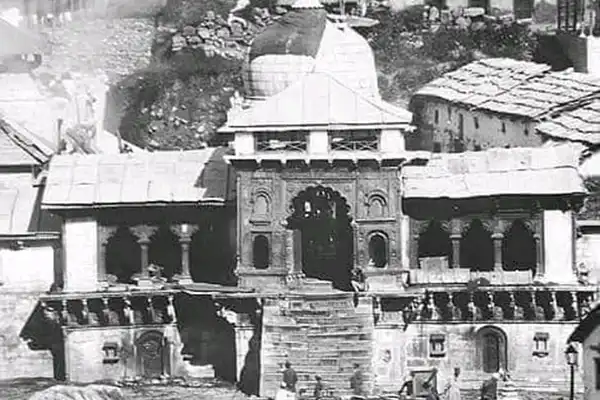
The story of Badrinath Dham is a combination of both mythological and historical lineage. As per ancient scriptures, it has been the center of meditation and worship since the Vedic period. The place derived its name from Badri (Indian Jujube), a tree under which Lord Vishnu performed penance.
Adi Shankaracharya’s Contribution
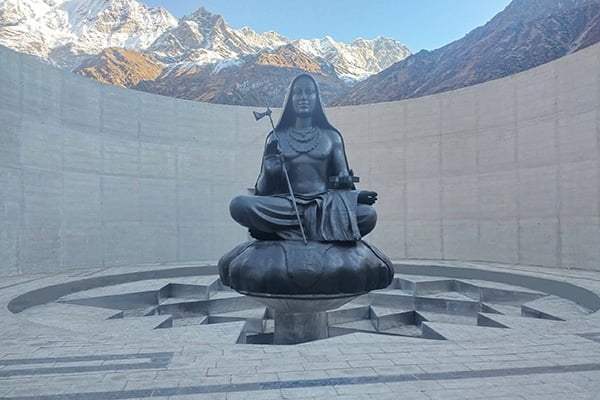
One of the major roles in the revival of the temple was played by the great Hindu philosopher and theologian Adi Shankaracharya. It is a belief that he found the idol of Lord Vishnu in the River Alaknanda. He then enshrined it in a cave near the Tapt Kund. Realizing the significance of the site, he built a shrine for the deity, which is the present-day Badrinath Temple.
Adi Shankaracharya is said to have established this temple as part of his efforts to spread and strengthen Hinduism in India. He initiated Chardham Yatra – a pilgrimage to the four sacred Hindu sites of Yamunotri, Gangotri, Kedarnath and Badrinath. His intention was promoting pilgrimage and unifying religious practices.
Historical Developments
A very important attribute of the architectural style of Badrinath Temple has been its periodic restoration over the centuries because of various reasons including but not limited to natural disasters such as earthquakes and avalanches as well as invasions. For instance, in the sixteenth century, the King of Garhwal reconstructed the temple whereas in the nineteenth century, the rulers of Jaipur had expanded and renovated it.
However, the spiritual appeal of Badrinath didn’t lose due to these difficulties. The temple has stood the test of time, and the restoration efforts prove the religious significance of Badrinath Dham. Today, it is one of the major symbols of India’s diverse and profound cultural and spiritual traditions for millions of devotees and tourists from all over the world.
Badrinath Yatra Registration
Badrinath Yatra requires prior planning and registration due to the difficult accessibility and climatic conditions of the area. Pilgrims can complete the registration either online or offline. You can’t avail the Chardham Yatra by Helicopter services without registration.
Steps for Registration
Online Registration: Online registration for pilgrims is available on the official website of Uttarakhand Tourism. This includes providing basic information such as name, age, gender, contact information, date of birth, passport details, trip dates and preferred accommodation. On successful completion of the registration, an e-pass is issued, which has to be carried out during the journey.
Biometric Registration: This is a compulsory process that can be completed in designated centers on the way to Badrinath. Pilgrims are required to provide their biometric details including fingerprints and photographs. This assists in developing a record or reference that is important in safety and emergency situations.
Medical Check-up: Since the journey requires a lot of physical activity at such a high altitude, it is important to undergo a medical check-up. This ensures that those who come for pilgrimage are in good health to undertake the journey and decreases their chances of getting sick.
Travel Permits: Some travel routes to Badrinath might have restricted access to foreign nationals and may need special permits. You can get these permits from local authorities.
Best time to Visit Badrinath
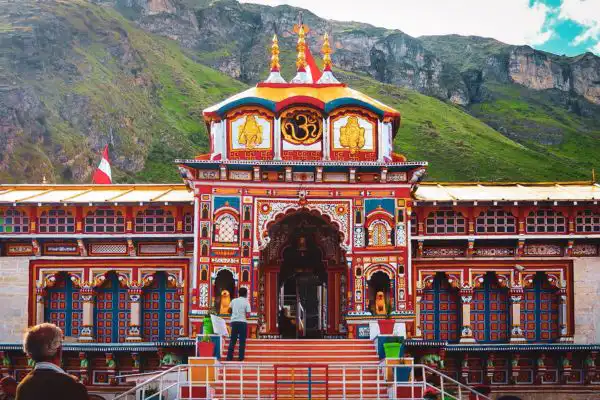
Choosing the best time to visit Badrinath is crucial for a fulfilling and safe pilgrimage. The temple is accessible for only six months in a year, that is between April or May to November, because during winters, there is heavy snowfall in the area.
Summer (May to June): This particular season is the most preferred when it comes to visiting Badrinath. The climate is considered sunny, with a moderating temperature ranging between 10 to 18 degrees Celsius or 50 to 64 degrees Fahrenheit. The snow has melted, so the road is not as treacherous as it would have been in the winter. This makes the journey relatively easier.
Monsoon (July to September): There is moderate to even heavy rainfall in the region, it is better to avoid travelling during this period because of the landslides and roadblocks. However, the greenery of the region and the waterfalls contribute to the best scenic attractions.
Autumn (September to November): This is another suitable time of the year for the pilgrimage. The weather is relatively cold with a temperature ranging between 5 to 15 degree Celsius (41°F to 59°F). The post-monsoon period guarantees that the sky is clear, and thus, promising breathtaking views of the Himalayas.
Places to Visit Near Badrinath
The pilgrimage to Badrinath is well supported by other places of interest that surround the site to make the spiritual trip more rewarding. Here are some popular places to visit in and around Badrinath:
Tapt Kund
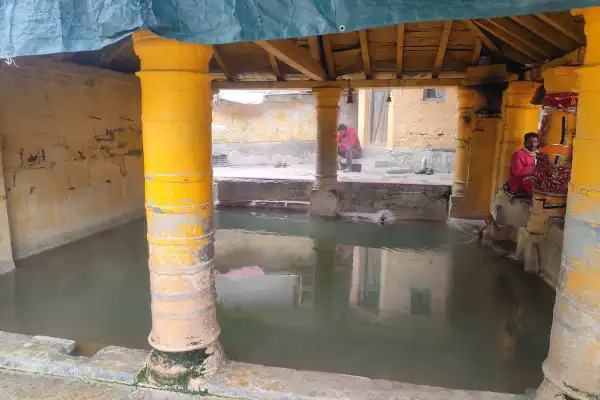
Situated right beneath the Badrinath temple, Tapt Kund is a natural hot water spring believed to have healing powers where pilgrims take a bath before entering the temple. The water is warm, with an average temperature of 45°C (113°F), which is famous for its curative properties. It is a belief that a dip in Tapt Kund cleanses the body and the soul of the devotees before they enter the temple.
Neelkanth Peak
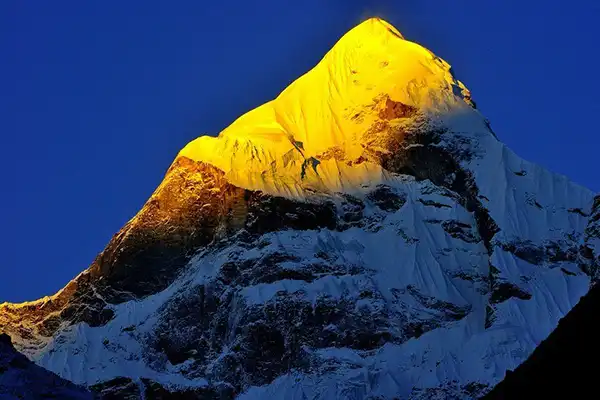
Neelkanth Peak with a towering height of 6,597 meters (21,640 feet) is commonly known as the ‘Garhwal Queen. ’ This mountain stands majestically behind Badrinath Dham and looks spectacular, especially in the morning when it glows with golden hues.
Mana Village
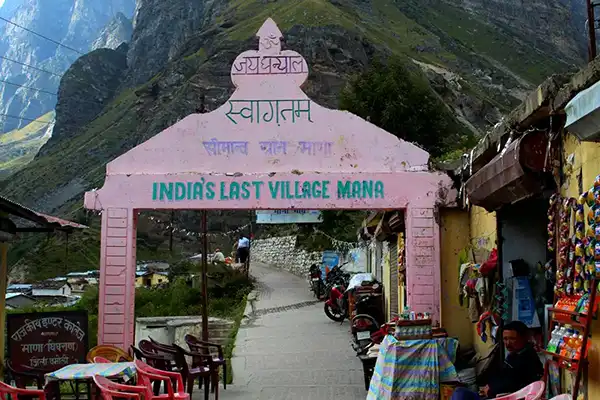
Mana is the last village in India before the Tibetan border. So it is a small village of historical and legendary importance. According to Hindu mythology, it is the starting point where the Pandavas began their journey to heaven. Tourists can also visit the historical Vyas Gufa. So it is a belief that the sage Vyasa conceived of the Mahabharata, and Ganesh Gufa, where Lord Ganesha wrote it.
Vasudhara Falls
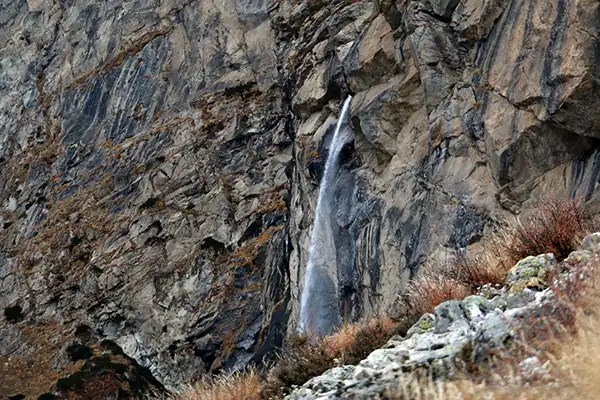
Vasudhara Falls is located at a distance of 6 km from Mana Village on a short trek. The waterfall stretches down a height of 122 meters (400 feet) and is located in the midst of striking natural beauty. There is a popular legend that the water of Vasudhara Falls turns away from those, who do not have a clean conscience.
Charanpaduka
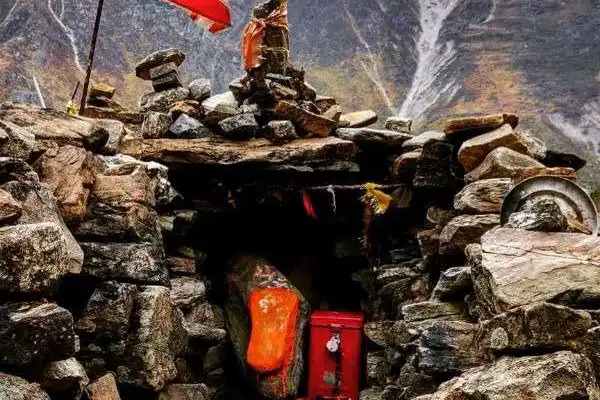
Charanpaduka is a rocky terrain located at an elevation of about 3,380 meters (11,090 feet) and is accessible via a steep trek from Badrinath. It holds the imprints of Lord Vishnu’s footprints, making it a significant spot for devotees. The trek to Charanpaduka offers panoramic views of the valley. Also, the surrounding peaks, providing both a spiritual and visual treat.
Things to Know Before You Visit Badrinath
Travelling to Badrinath is always a great spiritual journey that needs to be well-planned so as to achieve a safe trip. Here are some essential tips:
- Acclimatization: Due to the high altitude, it is very important to acclimatize properly in order to avoid altitude sickness. It is advisable to spend one or two days at a lower altitude before proceeding to Badrinath.
- Clothing: It is advised to pack warm clothes regardless of the season, as the temperature has been known to drop at night. Try to bring more layers of clothing for enhanced insulation.
- Footwear: Proper footwear that is comfortable and provides enough support is very important when it comes to walking, especially on rough terrains. You should always have another pair handy in the event the temperature drops, and it begins to rain or snow.
- Health Precautions: Bring essential medications for altitude sickness, headaches and colds or any other medication that may be necessary during the Yatra. Make sure to drink plenty of liquids and do not overexert in the initial hours.
- Cash and Connectivity: Although there are ATMs in Badrinath, it’s better to have cash with you. Telecommunications networks are still in a very early stage of development, and mobile networks are particularly scarce, so you need to prepare accordingly.
Frequently Asked Questions
Q1). What is special about the Badrinath Dham?
Badrinath, or Badrinarayan, is a Hindu temple dedicated to Lord Vishnu.
Q2). What is the distance of Badrinath Dham from Haridwar & Rishikesh?
The distance between Haridwar and Badrinath is approx. 320 km, and Rishikesh is around 295 km.
Q3). How much time does it take to reach Badrinath from Joshimath?
Badrinath is situated at a distance of around 45km. However, due to traffic in peak pilgrimage season (May and June) and the narrow road between the two destinations, it takes almost 3 hours to reach.

